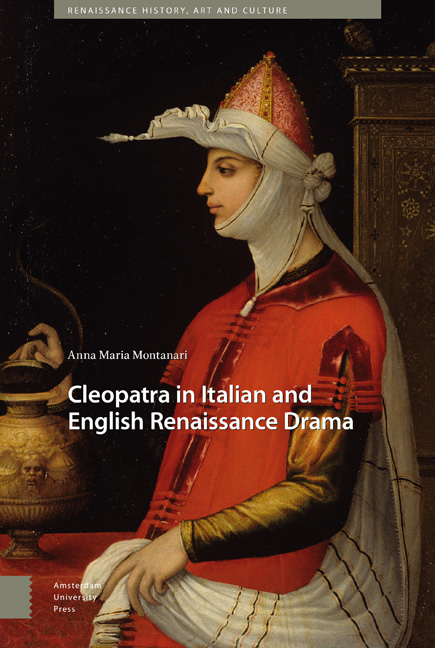Book contents
- Frontmatter
- Dedication
- Epigraph
- Contents
- List of Illustrations
- A Note on the Cover
- List of Abbreviations
- Acknowledgements
- Introduction
- 1 ‘No Humble Woman She’
- 2 ‘The Subject of Talk the World Over’
- 3 The Egyptian Queen's Rebirth
- 4 The Great Theatre of Cleopatra
- 5 ‘The Wanton Luxurie of Court’
- 6 ‘A Lass Unparalleled’
- Conclusion
- Bibliography
- Index
- Frontmatter
- Dedication
- Epigraph
- Contents
- List of Illustrations
- A Note on the Cover
- List of Abbreviations
- Acknowledgements
- Introduction
- 1 ‘No Humble Woman She’
- 2 ‘The Subject of Talk the World Over’
- 3 The Egyptian Queen's Rebirth
- 4 The Great Theatre of Cleopatra
- 5 ‘The Wanton Luxurie of Court’
- 6 ‘A Lass Unparalleled’
- Conclusion
- Bibliography
- Index
Summary
‘A Heart in Egypt’
For over two thousand years artists and historians alike have been charmed by the extraordinary figure of Cleopatra. The essence of her fortune lies in her contradictory image, embodying the two opposite and irreconcilable female stereotypes that have long haunted the male heterosexual imagination: the lascivious enchantress and the steadfast lover. Cleopatra is a hybrid: on the one hand she is the empowered seductress, robbing men of their masculinity; on the other the devoted lover, incapable of surviving her paramour's death. She commits suicide, the ultimate sin, and she is also a widespread symbol of lust, often depicted as naked, with serpents applied to her breasts. The impossibility of reducing her to a single portrait transforms Cleopatra into a sort of irresistible, quintessential woman, elusive and mysterious. Moreover, her life had something extra: even though it read like fiction, it was based on historical facts, and the public has always been partial to true stories.
The history of Cleopatra's literary tradition is multifarious by default. Each historical age, each European region, each cultural milieu modified her myth, according to its own moral values, its contradictions, its fears and preconceptions. This book considers some of the main adaptations of her story for the Renaissance stage, travelling from Italy to England to arrive finally with Shakespeare. Its organisation is chronological, making it possible to follow the development of the queen's character and giving the reader the opportunity to identify the inception and changing of a particular motif.
Chapter 1 sets out the historical and literary bases of Cleopatra's myth in the classical period, surveying contemporary works by Greek and Latin authors and focusing on the two opposing images of the last of the Ptolemies that circulated in her lifetime: the lustful corrupter depicted in Augustus’ propaganda, and the monarch-goddess of Cleopatra's own. The aesthetic-ideological readings of her figure by poets such as Virgil, Horace, Propertius and Lucan proved to be immensely productive over time and had a profound impact on Renaissance dramatists.
- Type
- Chapter
- Information
- Cleopatra in Italian and English Renaissance Drama , pp. 17 - 22Publisher: Amsterdam University PressPrint publication year: 2019



